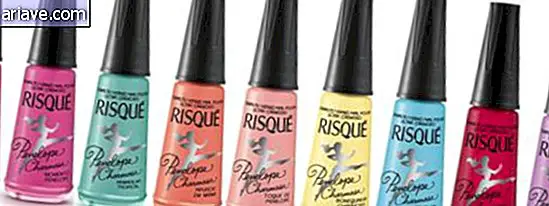The history of underwear: from its emergence to become a fashion article
Today, musicians like Calvin Harris and footballers like David Beckham increase their fortunes by starring in underwear-only campaigns. However, despite this popularity, which goes so far as to be stamped on billboards around the world, men still do not comment much about the types of underwear they wear - even though, according to lifestyle consultants, they are very proud. of the underpants they wear.
Historically, women have faced, for example, the use of corsets, considered much suffered by some of them. Men, on the other hand, do not like anything that tightens their faithful squire too much, so more elastic and body-fitting materials are among the preferences.
The current models are varied: slip (the most traditional and best selling in Brazil, which is dug in the sides), boxer (usually not marked on the body and is preferred by tall men because it "shortens" the legs), boxers ( which makes things so much looser), swim trunks (midway between slip and boxer) and jockstrap (covers only the penis, buttocks showing).

The first thongs
Historically, the first briefs appeared 7, 000 years ago when prehistoric man created a diaper-like leather thong. Remains of these early pieces were discovered by archaeologists, giving a sense of how our ancestors began to cover their "parts."
In Ancient Egypt, King Tutankhamun, who died in 1324 BC, was buried along with dozens of elaborate silk thongs. They were triangular and had longer ends that could be tied to the legs. The ancient Greeks also had their own thongs, but it is speculated that only slaves wore them.
With the rise of the Roman Empire, men's underwear began to take on new forms: a mix of thong and shorts became quite popular at the time. In the 13th century, it was time for the beginnings of long johns: linen pants that covered the whole leg and were worn much by both peasants and royalty.

From pants to underpants slip
During the Renaissance, these pants no longer covered just the inside of the pants to make it easier to pee: they looked like huge socks that covered everything but the penis. In the future, they were replaced by versions that covered the intimacies but contained buttons to facilitate their release.
After the Industrial Revolution, the invention of the bicycle also brought the underwear to new contours: it was necessary to better protect the penis while pedaling on cobblestone streets. The rise of cotton fabrics helped during this period, giving rise to underwear similar to today's jockstraps, which better supported the genitalia.
In the 20th century, two revolutions arose: slip briefs and boxers. The latter were derived from boxers' shorts and entered the market in the 1920s. Slip briefs, created in 1935 with a “Y” opening on the front, were so revolutionary in men's fashion that they were even compared with the emergence. of the bra, about two decades earlier.

Sex, fashion, power and money
The 1950s brought a wider variety of fabrics and colors to the manufacture of underpants, but it was not until the 1980s that a new revolution emerged: boxer briefs. It was during this time that advertising also began to use almost naked male models to promote the products, giving underwear an increasing status of sex, fashion, power and money.
Designers like Calvin Klein were pioneers in this regard as they put the man in the spotlight: his campaign with then-rapper Marky Mark (who would later become actor Mark Wahlberg) was one of the biggest hits of the era. The idea was to show that real men wore boxer briefs and that those who still opted for the slip were mommy's children - even dressed in them!
At first, this new masculine style appealed mainly to the gay crowd - so the resistance, to this day, of straight men taking on vanity in choosing their underwear. However, this reality is increasingly changing: between 2000 and 2005, in the UK, annual sales of underwear have increased by 25%, ie not only gay men seeking comfort and elegance at get dressed

And you, what is your favorite style of underwear? Do you think this discussion is still taboo? Be sure to comment!











